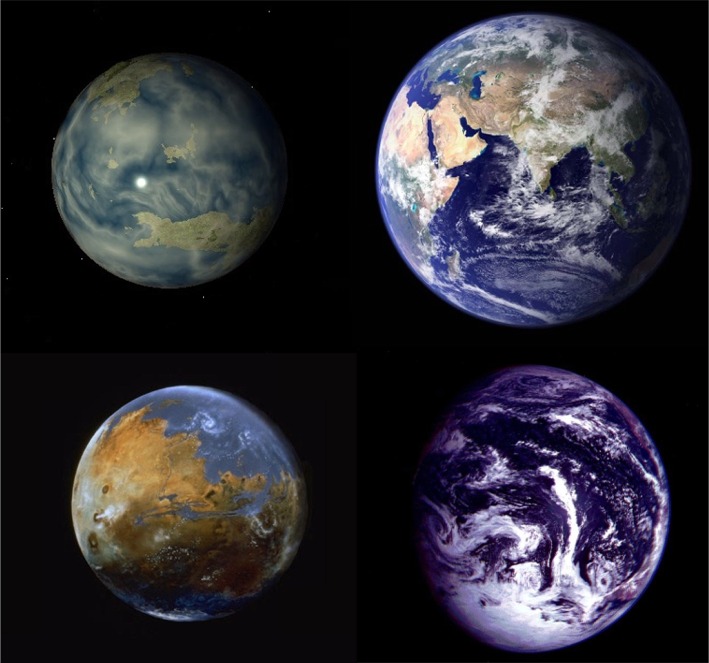
600, Terraform
The four Terrestrial planets got enough water for seas, atmosphere and clouds by the icebergs. The terraform developed differently though, because the planets were quite different by nature. The first planet, that was closest to the star, was hot. Most of the water vaporized to the atmosphere. The second planet, that was hit hard, got deep rifts and consequently deep seas and high mountains. The third planet got merely two third of the water and consequently got large desert areas. The fourth planet was almost completely covered by water and only a hundred small islands. All the terrestrial planets, except for the third, had a hot core that warmed the planets surface and environment.
The minerals were also differently distributed amongst the planets, though none of them missed any kind. The first and the third planet got extra minerals, metals and chemicals by occasionally volcanic eruptions.
The four inner terrestrial planets were seeded. The sudden occurrence of organic matter came with the ice bergs. Some advanced organisms did not survive the impacts or the following dramatic changes in the environments. The surviving organisms were primitive like amoebas, plankton, seaweed, algae, bacterial and even multi cellular beings like snails. The seas were so rich in organic and genetic material that the organisms grew and developed extremely fast. The seas became like an aquaria with fertilized egg cells that grew multicultural embryos.
The first terrestrial planet was close to the star. It got an environment that hardly could support life. The hot planet became inhospitable. There were, however, some places in the ground and in the shadows were some organisms managed survive. But the development stopped. The organisms did not have enough energy or nourishment for development. After 100 million year, there was a much reduced culture left. Their existence consists mainly of staying alive from day to day.
The second planet got a very harsh environment for its first organisms. Occasionally volcanic eruptions, earthquakes and floods hit back the development several times. On the other hand, the organisms learned constant adoption that made them increasingly robust. After 100 million years, the surface stabilized. The organisms got peace for development. Soon there were shellfishes, fishes and corals.
The smaller size of the third planet provided a development at low gravitation. The organisms were not that compact and heavy. The seas was smaller, because the planet only got two third of the water. The atmosphere was thinner, which again provided less protection to the radiation of the star. Consequently, the organisms developed strong skin or shell. After 100 million years, the first primitive snails, fisher and corals were developed. Their behavior was very aggressive and defensive, - eat or be eaten.
The fourth
planet got almost an ideal aqua environment, like a global aquarium. Despite
the distance to the star, the sea was warmed by the planetís hot core. The
rich organic and genetic material supported an even faster development. The
lack of light from the star, due to the distance and the sea, did slow down
the development in some ways though. After 100 million years, the sea got a
rich flora, and a great variation of species like advanced fishes,
shellfishes and corals.